Why Cama Building, a Parsi charity home where tenants pay as low as Rs 45 per month as rent, bagged 2016 UNESCO Asia Pacific Heritage Award of Merit last week
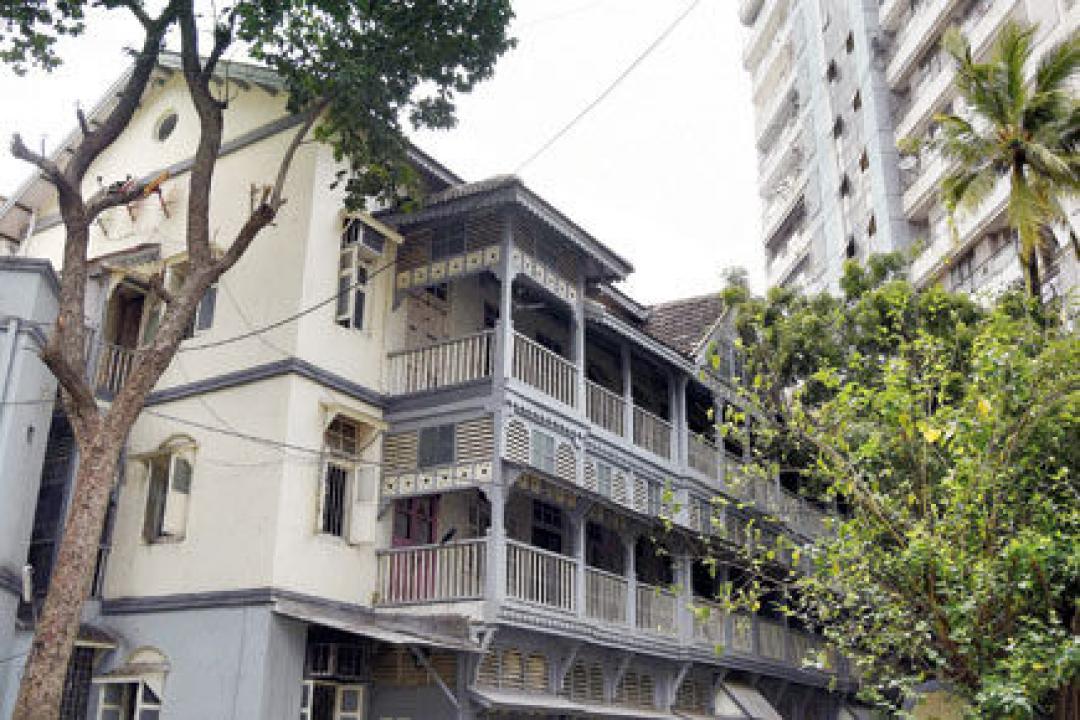
Cama Building
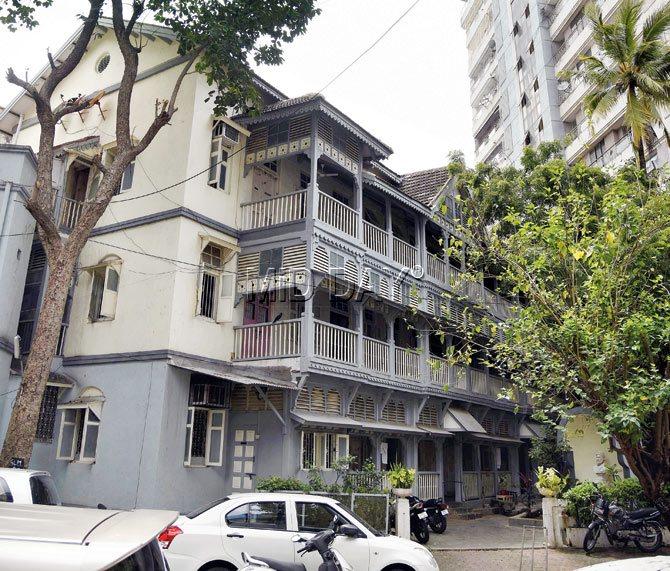
Cama Building in Murzban Colony, Gilder Lane, which was awarded the UNESCO-Asia Pacific Heritage Award of Merit last week. Pics/Pradeep Dhivar
 Firdosh Cooper and Russi Kutar recall the time their residence was sought out as the locale for the filming of Such a Long Journey, based on Rohinton Mistry’s novel by the same name. It is a tale from the late 1990s that continues to be recounted at Cama Building — how the lane was cordoned off at both ends; how tenants on all three floors welcomed actors Roshan Seth and Soni Razdan into their homes. Kutar holds dear an autographed photo of Seth and fondly remembers Sooni Taraporevala, who wrote the film’s screenplay. Cooper admits one grouse: that Nitin Desai, the art director, made Cama Building look grimmer than it is. “They wanted to show Bombay as it was then and so the buildings look a little wonky in that film,” he says, shyly confessing that he had vied for a part in the movie.
Firdosh Cooper and Russi Kutar recall the time their residence was sought out as the locale for the filming of Such a Long Journey, based on Rohinton Mistry’s novel by the same name. It is a tale from the late 1990s that continues to be recounted at Cama Building — how the lane was cordoned off at both ends; how tenants on all three floors welcomed actors Roshan Seth and Soni Razdan into their homes. Kutar holds dear an autographed photo of Seth and fondly remembers Sooni Taraporevala, who wrote the film’s screenplay. Cooper admits one grouse: that Nitin Desai, the art director, made Cama Building look grimmer than it is. “They wanted to show Bombay as it was then and so the buildings look a little wonky in that film,” he says, shyly confessing that he had vied for a part in the movie.
ADVERTISEMENT
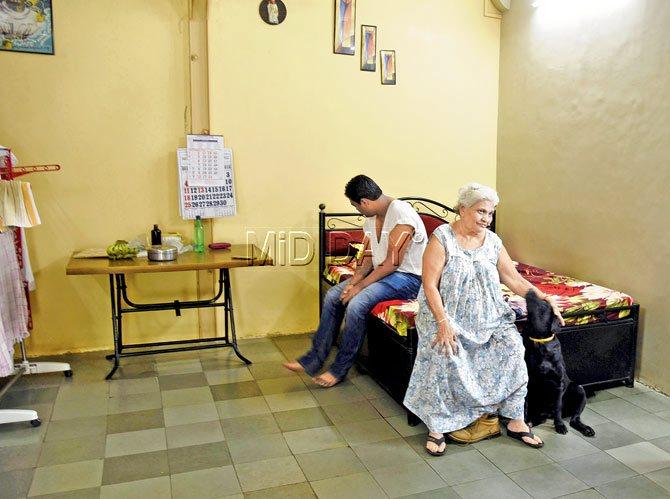
The Palkhiwalla family and their pet dog Alice in their second floor flat, which was restored, while they continued to reside in it.
It was one of the highlights of Cooper’s 57-year-old life spent at Cama since his childhood. Now, he says there is one more. He is the proud resident of the ground-plus-two-floor structure, which received the 2016 UNESCO Asia Pacific Heritage Award of Merit last week for repair and restoration carried out by conservation architect Vikas Dilawari and his team. It is the first of 24 buildings that form the century-old Murzban Colony, as the award statement puts it, “to be rescued from a state of serious deterioration” and “highlights a private commitment to supporting the viability of Mumbai’s distinctive but vulnerable Zoroastrian community.”
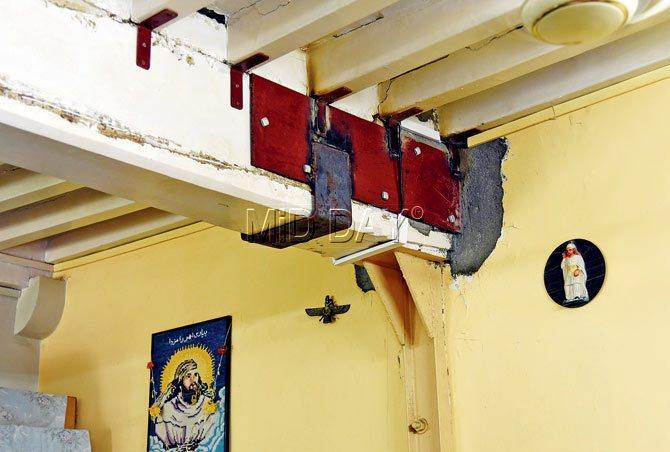
The flat’s teak beams have been refurbished and strengthened during restoration
Engineering marvel
On Wednesday morning, we meet Dilawari at the leafy Gilder Lane, in Mumbai Central, where stand the 24 edifices that make up Murzban Colony. The first in the row is Cama Building, built diagonally to the street to accommodate it into a triangular patch of land. Outside the building, Dilawari shows us a marble bust, of architect and engineer Khan Bahadur Muncherji Cowasji Murzban (1839-1917).

An architectural layout of Murzban Colony’s 24 buildings. On the tip, to the left, is Cama Building. Right next to it, in a plot not owned by the Garib Zarthoshtina Rehethan Fund, once stood a bungalow similar to the rest. A decade ago, a high-rise sprouted in the place of the bungalow, Now, from the second floor of Cama Building, all that one can see is the high-rise’s carpark
Murzban, an engineer with the Public Works Department, founded the Garib Zarthoshtina Rehethan Fund (or the Poor Zoroastrians Building Fund) in 1890. The trust’s colonies in Gilder Lane and Agripada are named after Murzban, who made sure that poor and disadvantaged Parsis, including widows, found living quarters across the city. Dr Nawaz Mody, an associate of the trust, says that Cama Building’s residents, even today, pay as less as R45, with the most expensive flats fetching R932. A plaque on the ground floor, ensconced by almirahs and bedding, reads that Cama Building was built in 1898 to the tune of Rs 50,000.
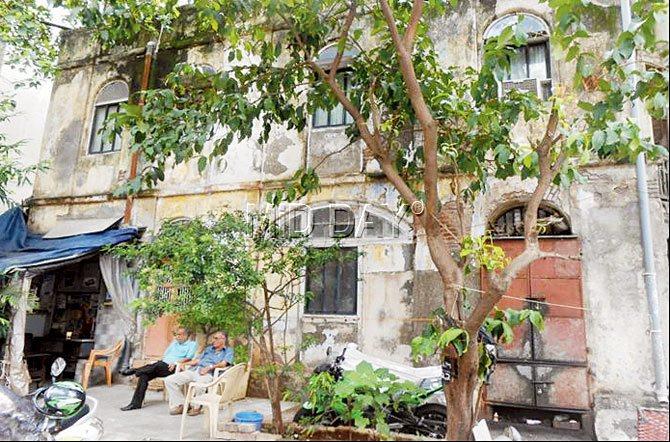
Before restoration, a block attached to Cama Building, out of which a garage functioned in the structure’s dilapidated conditions. PIC/VIKASâÂÂu00c2u0080ÂÂu00c2u0088DILAWARI
“Murzban Colony is a role model for new townships meeting the needs and not the greed of people,” says Dilawari, who has won 12 UNESCO Asia-Pacific awards for his conservation work till date. Cama Building marks a hat-trick for the trust, whose homes in Wadia Street and Lal Chimney Complex have earlier been recognised by the UNESCO, for restoration work funded by them and carried out by Dilawari. “There was a consideration to accommodate the lower income groups closer to the city centre and provide them with essential amenities such as a school and a dispensary,” he continues.
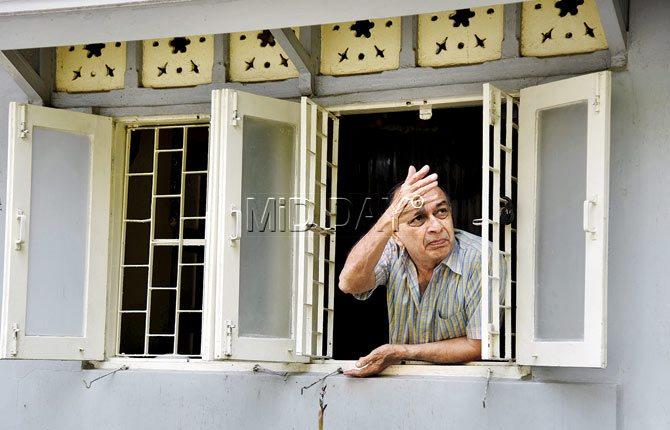
Looking out of the window and joining in on conversations in the courtyard, Russi Kutar has been a ground floor resident of Cama Building for the last 35 years. His wife, on the other hand, has been living here since her childhood
Each building in the colony is named after a philanthropic Parsi family — Allbless, Bode, Saravsar and so on. Cama Building is christened after the extended family that also gave the city the hospital near Azad Maidan. “There is a tendency in the public to think that charity housing can be left to rot,” says Muncherji NM Cama, president and secretary of the trust. He continues, “We were appalled by the condition in which people lived till a few years ago. We want residents to take pride in their surroundings, even if it’s charity housing. There is timber in these houses, keeping in mind the tides and breeze of Mumbai, the likes of which we will never see again.”
Led by caretaker Ramzan Shaikh, we climb up to the second floor, the doorways are guarded by little rangoli designs — called ‘chalk’ by the residents — depicting fish, an auspicious symbol among the Parsis. Standing outside resident Paricha Sidhwa’s home, we understand why Dilawari says that Cama Building is an oasis. The frenzied traffic of nearby Maratha Mandir is blissfully missing and all you hear are the sounds of children at the trust’s girls’ school, chirping sparrows and the suspicious growls of Sidhwa’s pet dog.
We catch a view of a white-washed well at one end of the courtyard. It is surrounded by a grove of trees and a deck of lanterns placed by the residents. “Water is sacred to us, so we light these lamps. Now, water is not easily available in this well because of the high-rises around us, but in the monsoon, it fills up,” says Cooper’s wife, Dhan. The well was built in 1900, two years after the building for Rs 400.
Restore or redevelop?
“I wasn’t called to restore Cama Building from the point of view of conservation; it was just that it needed urgent attention. The roof was leaking, the wooden beams were rotting and the building needed structural reinforcement,” says Dilawari, who was assisted by his staff Altaf Muwal and contractor Cyrus Unwala on this project. New teakwood beams, similar to the existing ones, have now been fitted. The old ones have withstood Mumbai’s balmy weather for more than a century. More practical measures, such as awnings and translucent windowpanes to allow more natural light, have been added seamlessly to the old structure. “The existing lifestyle of the residents is a living tradition which is to be retained. It may be through the use of verandahs to look onto the street, watching children in the compound, sitting back and enjoying a cup of tea with the Sunday issue of the community newspaper, Jam-e-Jamshed or buying groceries from vendors pushing their carts along the shaded Gilder Lane,” says Dilawari, as a little debate ensues between him and Cooper over which breeze — westerly or north-easterly — comes wafting into the wide
verandahs.
While Cama Building looks like a chawl, Murzban was foresighted in making sure that the experience wouldn’t be a stressful one. Each house, therefore, comes with its own attached toilet and a separate water line. Right opposite Cama Building, however, what would have been once a gentle view of roofs with Mangalore tiles and canopies is now the direct offence of a high-rise’s car park that came up a decade ago. That plot, didn’t belong to the trust and formerly housed a tiled-roof building similar to the rest in the colony.
“By recognising Cama Building internationally, the UNESCO is trying to promote a philosophy, that redevelopment of buildings like these into high-rises is not the only solution,” says Dilwari. The cost of restoring Cama is Rs 607 per sq ft. It may seem steep, but it is more efficient than overhauling the building.
However, Dilawari says that the greatest challenge to the project, which began in 2010, came in the form of the very people it was meant for. Residents were not shifted to transit homes and work on interiors followed only in flats where they were permitted. “We understood the residents’ anxiety — if they were temporarily shifted somewhere, would they come back to this flat? They have heard similar instances happening around in Mumbai,” says Cama.
Cooper, however, warns himself and his neighbours of growing too used to the trust’s support. He says, concerned, “Even if it’s hammering a nail, we want the trust to do it.” With a UNESCO tag, the residents, some living here for generations, will take ownership of safeguarding their building more dearly. But, like the bank clerk, Gustad Noble in Such a Long Journey, Cama Building’s tryst with survival in maximum city seems far from over.
 Subscribe today by clicking the link and stay updated with the latest news!" Click here!
Subscribe today by clicking the link and stay updated with the latest news!" Click here!








